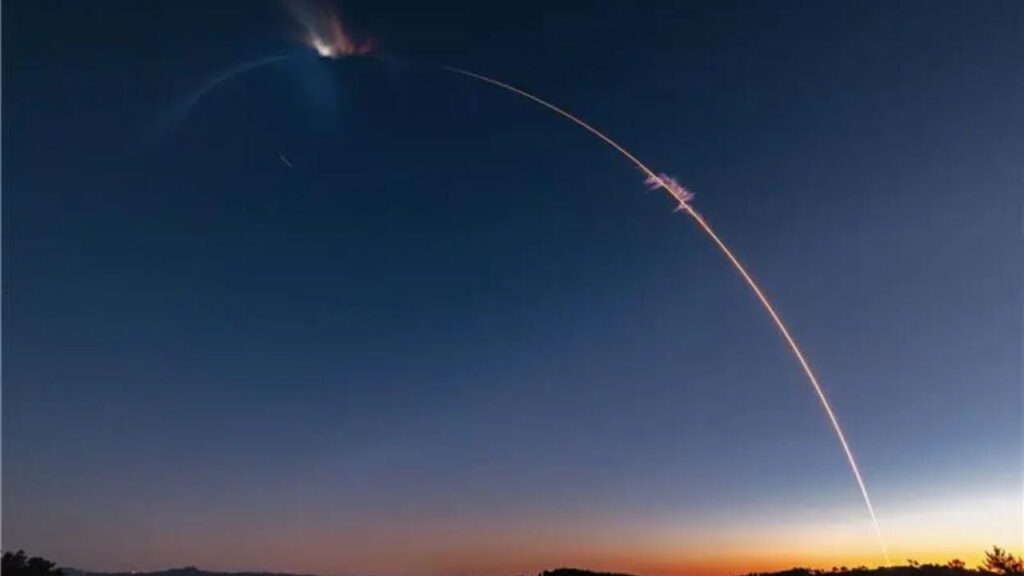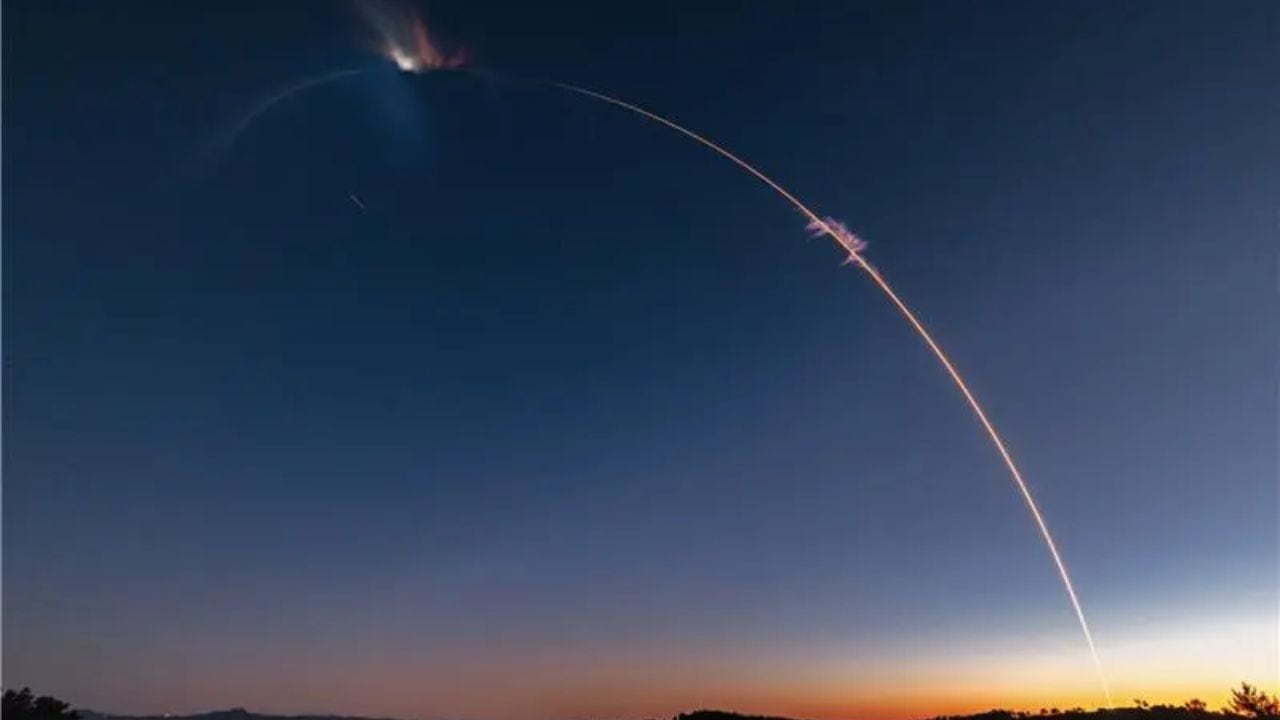Firefly Aerospace, CubeSats, NASA CubeSat Launch Initiative, Alpha rocket, Noise of Summer mission, Vandenberg Air Force Base, climate studies, satellite technology, educational outreach, commercial space sector
Firefly Aerospace successfully launched eight CubeSats for NASA’s CubeSat Launch Initiative on July 3, 2024. The mission, named “Noise of Summer,” lifted off from Vandenberg Air Force Base, showcasing the capabilities of Firefly’s Alpha rocket. The CubeSats, developed by universities and NASA centers, focus on climate studies, satellite technology, and educational outreach.

Eight CubeSats Lift Off for NASA on Firefly Aerospace Rocket
In a remarkable feat of modern space exploration, Firefly Aerospace successfully launched eight small satellites, known as CubeSats, on July 3, 2024. This mission, named “Noise of Summer,” was part of NASA’s CubeSat Launch Initiative (CSLI) and saw the CubeSats lifted off aboard Firefly’s Alpha rocket from Space Launch Complex 2 at Vandenberg Air Force Base in California. The launch occurred at 9:04 p.m. PDT and marked a significant milestone in NASA’s efforts to promote the use of small satellites for scientific research and technological development.
The CubeSat Launch Initiative
NASA’s CubeSat Launch Initiative is a program designed to provide a low-cost pathway for universities, non-profits, science centers, and other research institutions to send CubeSats into space. CubeSats are miniature satellites, typically measuring 10x10x10 centimeters and weighing about 1.33 kilograms per unit. They offer a versatile platform for a variety of scientific experiments, technology demonstrations, and educational projects.
The CSLI is instrumental in fostering innovation and expanding access to space for smaller institutions that may not have the resources to fund traditional satellite missions. By leveraging the compact and cost-effective nature of CubeSats, the initiative democratizes space research, enabling a broader range of organizations to contribute to scientific discovery and technological advancements.
Firefly Aerospace and the Alpha Rocket
Firefly Aerospace, a company dedicated to providing economical and reliable access to space, was contracted under NASA’s Venture-Class Launch Services Demonstration 2 (VCLS Demo 2) to launch the CubeSats. The Alpha rocket, a key vehicle in Firefly’s lineup, is designed to deliver payloads to low Earth orbit (LEO). It is capable of carrying up to 1,000 kilograms to LEO, making it an ideal choice for missions involving multiple small satellites.
The “Noise of Summer” mission was Firefly’s second demonstration under the VCLS Demo 2 contract. This contract aims to stimulate the commercial launch sector by providing opportunities for emerging launch providers to demonstrate their capabilities. By fostering competition and innovation within the industry, NASA hopes to drive down the costs of space launches, making space more accessible for future missions.
The CubeSat Missions
The eight CubeSats launched on the Alpha rocket were developed by a mix of universities and NASA centers. These small satellites are designed to conduct a wide range of scientific studies and technological experiments. The missions encompass areas such as climate studies, satellite technology development, and educational outreach to students. Here’s a closer look at some of the CubeSat missions:
- Climate and Atmospheric Studies:
Several CubeSats are equipped with instruments designed to monitor and study Earth’s climate and atmospheric conditions. These satellites collect valuable data on parameters such as temperature, humidity, and atmospheric composition, contributing to our understanding of climate change and its impacts. - Technology Demonstrations:
Some CubeSats are focused on testing new satellite technologies. These technology demonstrations include advancements in communication systems, propulsion methods, and satellite autonomy. Successful demonstrations can pave the way for future missions that rely on these innovative technologies. - Educational Outreach:
Many CubeSats are part of educational programs aimed at engaging students in space science and engineering. These missions provide hands-on experience in satellite design, construction, and operation, inspiring the next generation of scientists and engineers. Educational CubeSats often involve collaborations between universities and K-12 schools, creating opportunities for students at various educational levels to participate in space missions.
Significance of the Launch
The successful launch of the CubeSats aboard Firefly’s Alpha rocket is a testament to the growing capabilities of the commercial space sector. It highlights the increasing role of private companies in providing launch services for scientific and research missions. By partnering with companies like Firefly Aerospace, NASA can leverage commercial expertise and infrastructure to support its scientific goals.
Moreover, the launch underscores the importance of small satellites in advancing our understanding of space and Earth. CubeSats offer a cost-effective and efficient way to conduct a wide range of scientific experiments and technology demonstrations. Their relatively low cost and short development time make them an attractive option for researchers seeking to explore new concepts and gather data quickly.
The Future of CubeSats and Commercial Launch Services
The success of the “Noise of Summer” mission bodes well for the future of CubeSats and commercial launch services. As technology continues to advance, we can expect CubeSats to become even more capable and versatile. Future CubeSat missions may tackle increasingly complex scientific questions, explore new regions of space, and demonstrate cutting-edge technologies.
Additionally, the commercial space sector is likely to see continued growth and diversification. Companies like Firefly Aerospace are at the forefront of this transformation, offering new and innovative launch solutions that complement NASA’s traditional capabilities. The competition fostered by initiatives like VCLS Demo 2 will drive further advancements in launch technology, ultimately making space more accessible and affordable for a broader range of missions.
Conclusion
The launch of eight CubeSats as part of NASA’s CubeSat Launch Initiative on Firefly Aerospace’s Alpha rocket marks a significant achievement in the field of space exploration. This mission, aptly named “Noise of Summer,” not only demonstrated the capabilities of Firefly’s Alpha rocket but also highlighted the importance of CubeSats in scientific research, technology development, and education.
NASA’s commitment to fostering innovation through programs like the CSLI and VCLS Demo 2 is paving the way for a new era of space exploration, where small satellites and commercial partnerships play a crucial role. As we look to the future, the continued success of CubeSat missions and the growth of the commercial launch sector will undoubtedly expand our understanding of the universe and inspire new generations of scientists and engineers.
With the advancements in technology and the increasing accessibility of space, the possibilities for CubeSat missions are virtually limitless. From studying Earth’s climate to testing new space technologies and engaging students in hands-on learning, CubeSats are poised to make significant contributions to science and technology in the years to come. The “Noise of Summer” mission is just one example of how these small but mighty satellites are making a big impact on our understanding of the world and beyond.
Read More
- Florida Stripper Sues State Over New Age Requirement Law: A Battle for Constitutional Rights
- Vatican Excommunicates Far-Right Critic of Pope Francis
- SXSW Cuts Sponsorship Ties with US Army and RTX Corporation for 2025 Festival Amidst Artist Protests
- BET Awards Apologizes to Usher for Audio Malfunction During Speech
